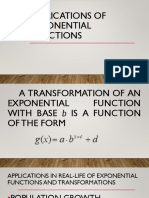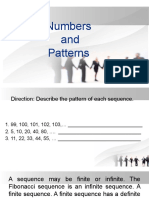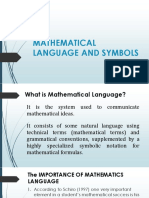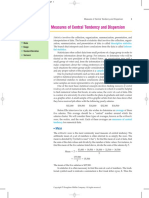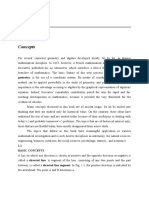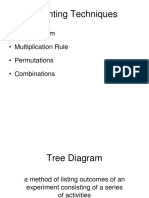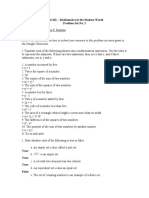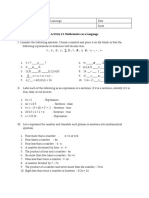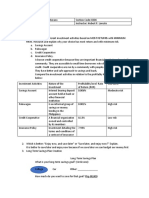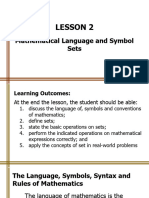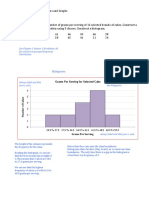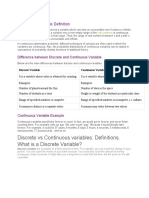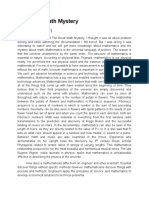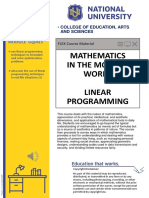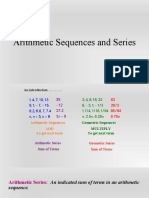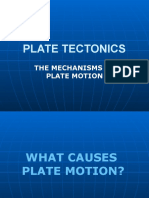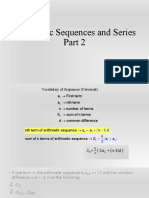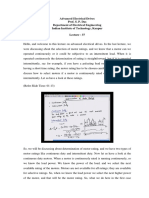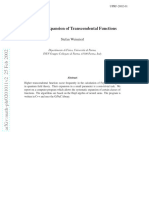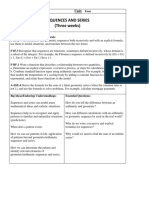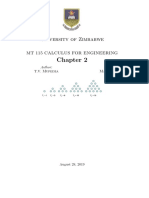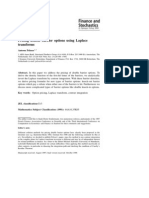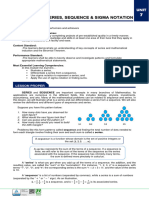0% found this document useful (0 votes)
371 views26 pagesIntro to Arithmetic Sequences
1. The document introduces arithmetic sequences and series. It defines an arithmetic sequence as a sequence whose consecutive terms have a common difference.
2. Formulas are provided for the nth term of an arithmetic sequence (an = a1 + (n - 1)d) and the sum of n terms of an arithmetic sequence (Sn = n(a1 + an)/2).
3. Examples are given of finding common differences, writing terms of sequences, and using the formulas to find specific terms or sums. The key aspects of arithmetic sequences - the first term, common difference, and formulas for terms and sums - are summarized.
Uploaded by
Mark Niño JavierCopyright
© © All Rights Reserved
We take content rights seriously. If you suspect this is your content, claim it here.
Available Formats
Download as PDF, TXT or read online on Scribd
0% found this document useful (0 votes)
371 views26 pagesIntro to Arithmetic Sequences
1. The document introduces arithmetic sequences and series. It defines an arithmetic sequence as a sequence whose consecutive terms have a common difference.
2. Formulas are provided for the nth term of an arithmetic sequence (an = a1 + (n - 1)d) and the sum of n terms of an arithmetic sequence (Sn = n(a1 + an)/2).
3. Examples are given of finding common differences, writing terms of sequences, and using the formulas to find specific terms or sums. The key aspects of arithmetic sequences - the first term, common difference, and formulas for terms and sums - are summarized.
Uploaded by
Mark Niño JavierCopyright
© © All Rights Reserved
We take content rights seriously. If you suspect this is your content, claim it here.
Available Formats
Download as PDF, TXT or read online on Scribd
/ 26



